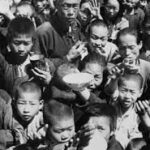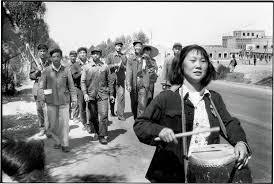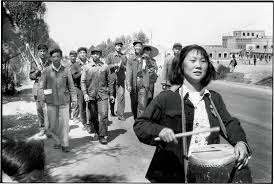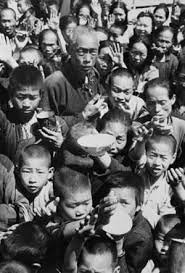
The Great Chinese Famine ‘three years of great famine’ was a famine that occurred between 1959 and 1961 in the People’s Republic of China (PRC). Some scholars have also included the years 1958 or 1962. It is widely regarded as the deadliest famine and one of the greatest man-made disasters in human history, with an estimated death toll due to starvation that ranges in the tens of millions (15 to 55 million). The most stricken provinces were Anhui (18% dead), Chongqing (15%), Sichuan (13%), Guizhou (11%) and Hunan (8%).
The major contributing factors in the famine were the policies of the Great Leap Forward (1958 to 1962) and people’s communes, launched by Chairman of the Chinese Communist Party Mao Zedong, such as inefficient distribution of food within the nation’s planned economy; requiring the use of poor agricultural techniques; the Four Pests campaign that reduced sparrow populations (which disrupted the ecosystem); over-reporting of grain production; and ordering millions of farmers to switch to iron and steel production.
During the Seven Thousand Cadres Conference in early 1962, Liu Shaoqi, then President of China, formally attributed 30% of the famine to natural disasters and 70% to man-made errors. After the launch of Reform and opening up, the Chinese Communist Party (CCP) officially stated in June 1981 that the famine was mainly due to the mistakes of the Great Leap Forward as well as the Anti-Right Deviation Struggle, in addition to some natural disasters and the Sino-Soviet split.
Extent of the famine

Production drop
Policy changes affecting how farming was organized coincided with droughts and floods. Weather had been relatively mild for much of the 1950s, but became particularly bad by 1959, driving down crop yields. As a result, year-over-year grain production fell dramatically. The harvest was down by 15% in 1959 compared to 1958, and by 1960, it was at 70% of its 1958 level.
Specifically, according to China’s governmental data, crop production decreased from 200 million tons (or 400 billion jin) in 1958 to 170 million tons (or 340 billion jin) in 1959, and to 143.5 million tons (or 287 billion jin) in 1960.












Leave a Reply